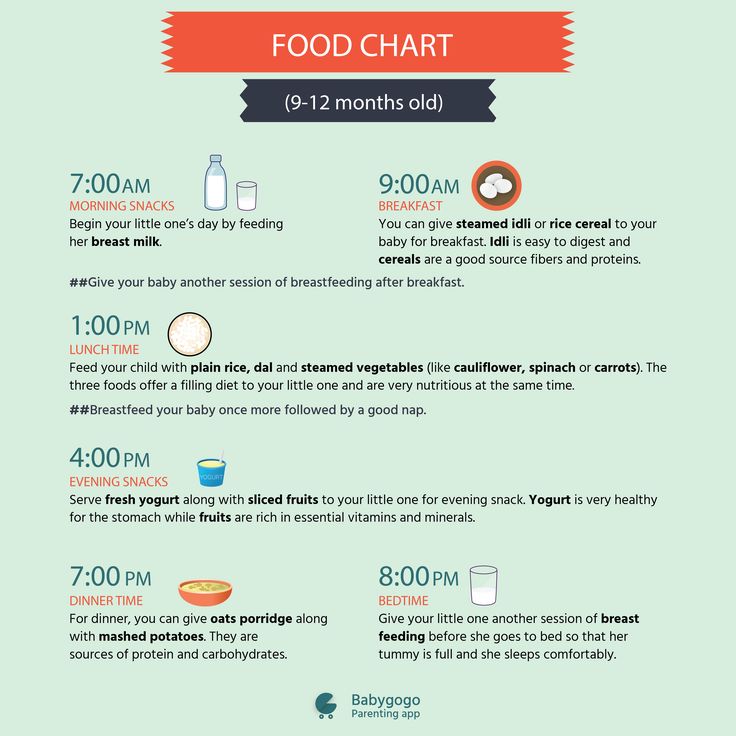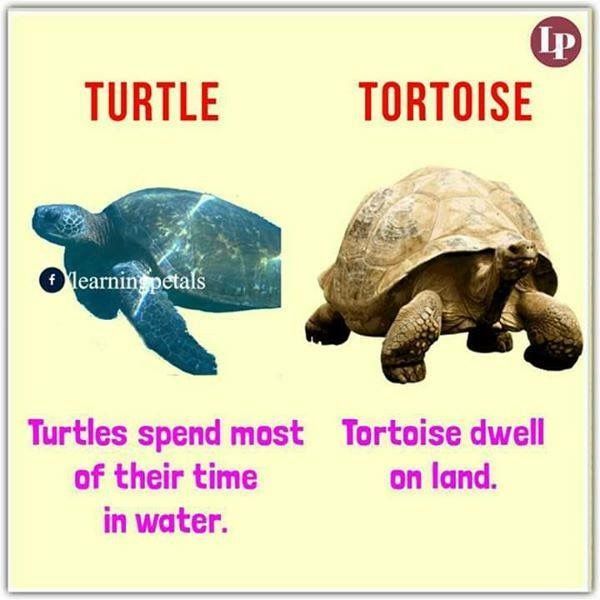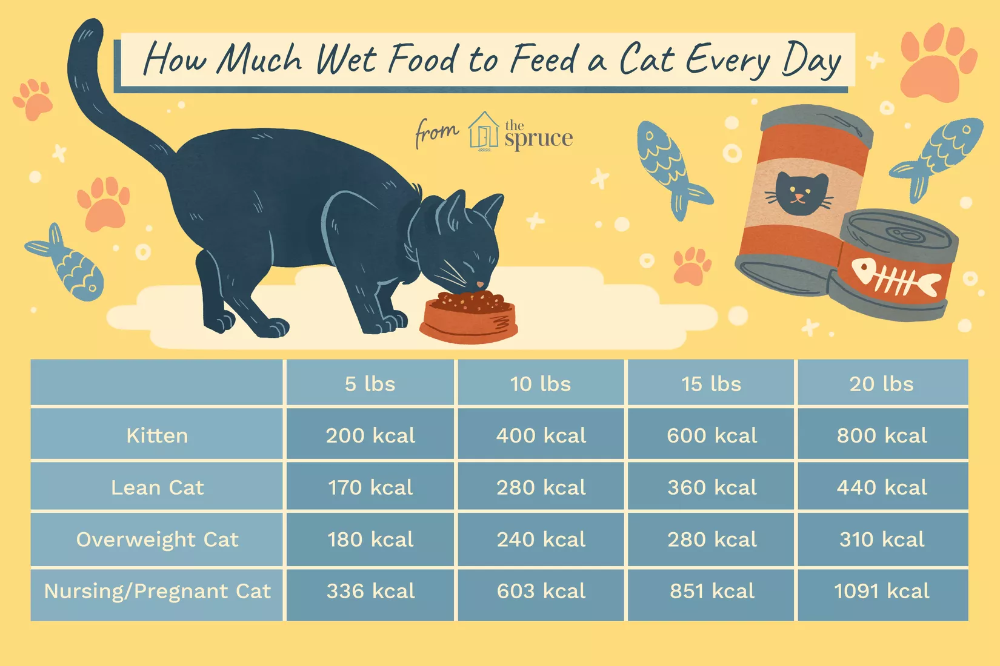What time to feed baby dinner
When Should Your Baby Eat and Sleep?
At this stage, your child’s sleep patterns are starting to settle down. They’ll get roughly 11 hours of rest at night, plus a few daytime naps, for a total of 14 to 15 hours per day.
Fortunately, these long, uninterrupted stretches of time mean you’ll finally get some of the rest and relaxation you deserve. Simply follow these easy tips for improving your own sleep habits. It’s also a chance for you to rekindle physical intimacy with your partner.
Here are two sample schedules that are appropriate for formula or breast-fed 6-month-old babies. Just remember that there’s no one-size-fits-all approach and it’s OK to customize them to suit your child’s specific needs.
Sample sleep schedule for formula-fed babies:
- 7 a.m. — baby wakes up, eats, and plays
- 9:30 a.m. — takes a morning nap
- 11:30 a.m. — wakes up, eats, and plays
- 2:30 p.m. — takes an afternoon nap
- 4:30 p.
m. — wakes up, eats, and plays
- 6:30 p.m. — takes a bath and prepares for bedtime
- 8 p.m. — eats, then goes to sleep for the night
Sample sleep schedule for breastfed babies:
- 6 a.m. — baby wakes up, then enjoys bonding time with mom
- 8 a.m. — takes a morning nap
- 10 a.m. — wakes up, eats, and plays
- 12 p.m. — takes an afternoon nap
- 2 p.m. — wakes up, eats, and plays
- 4 p.m. — takes another short nap
- 4:30 p.m. – enjoys playtime in bed
- 6 p.m. — eats, plays, takes a bath, and prepares for bedtime
- 8 p.m. — eats, then goes to sleep for the night
Are you also looking for a few pointers at mealtime? Here are two sample feeding schedules, along with serving suggestions and tips for making the process a little easier on you and your baby. Again, it’s important to note that no two kids are alike, and individual pace and intake may vary.
Remember:
- You should always start feeding at the earliest sign of hunger and stop feeding at the earliest sign of fullness.

- At 6 months of age, they might be eating as often as four to six times a day, roughly every four to five hours. Despite being able to consume 6 to 8 ounces of formula in one sitting, your child should never have more than 32 ounces per day.
- While it’s an appropriate time to introduce solid foods, the majority of their nutrition should still come from breast milk or formula. Signs of readiness for solid foods include better hand-to-mouth coordination, decreased tongue protrusion reflex, sitting up unassisted, and opening their mouth for the spoon.
- Stay away from choking hazards like small fruits, raw vegetables, nuts, candy, gum, and whole grapes. Give them soft, easy-to-chew foods such as peas, bananas, sweet potatoes, or pears. New items should be added individually, and at least a week apart, so you can clearly identify what they can or can’t handle.
- Since breast milk is not a good source of iron, consider incorporating iron-fortified baby cereals and iron-rich produce into their diet.

- The daily caloric requirement for 4 to 6-month-olds is roughly 690 kilocalories per day for boys and 645 kcal per day for girls. Between 7 and 9 months, it increases to 825 kcal for boys and 765 kcal for girls.
Sample feeding schedule for formula-fed babies:
- 7 a.m. — baby drinks morning formula (6 ounces)
- 10 a.m. — eats breakfast (oatmeal cereal with fresh fruit)
- 2 p.m. — eats lunch (a bottle of formula, along with a serving of fruits or vegetables)
- 5:30 p.m. — eats dinner (two servings of vegetables and one serving of fruit)
- 7 p.m. — drinks bedtime formula (6 ounces), then goes to sleep for the night
Sample feeding schedule for breastfed babies:
- 7 a.m. — baby wakes up, then nurses for 20 minutes
- 8:30 a.m. — eats breakfast (oatmeal cereal made with 2 ounces of breast milk and 2 ounce serving of fresh fruit)
- 12:30 p.m. — nurses for 20 minutes
- 3 p.
 m. — eats lunch (3 ounce serving of vegetables)
m. — eats lunch (3 ounce serving of vegetables) - 5:30 p.m. — nurses or drinks a bottle of breast milk
- 8:15 p.m. — eats dinner (oatmeal cereal made with 2 ounces of breast milk and 2 ounces serving of vegetables), then goes to sleep for the night
In the event that your 6-month-old’s eating and sleeping patterns remain inconsistent, consider consulting your pediatrician. For more information on how to care for and nurture your child, visit Flo’s website!
How to Align Baby's Meal Times with Family's Meal Times
When to move your child’s meal times so they are at the same time as the rest of the family. What time should baby eat dinner?
When you first start to feed your baby solid foods, baby’s eating schedule isn’t usually lined up with the same times the family eats meals.
You can really start to feel like all you do all day is feed people between baby eating and feeding the family.
As baby gets older, there is a natural progression of moving more toward eating at the same time the rest of the family moves. This happens in part because the feeding schedule lines up, in part because you line up with the baby’s schedule, and in part because baby becomes more independent of an eater.
This happens in part because the feeding schedule lines up, in part because you line up with the baby’s schedule, and in part because baby becomes more independent of an eater.
Here are the details on the steps you take to get baby eating meals at the same time as the rest of the family.
Post Contents
- Start with Finger Foods at Family Meals
- Start with Breakfast
- Shift Family Meals if Needed
- Add Lunch Time
- Snack Time Might Be Required
- Do Not Rush It
- Age Guidelines
- Sample Schedule
- What To Feed Your Baby
- Related Posts
- Reader Questions
I would consider the first step in aligning meals with the family to be starting by having the baby sit with you at family meals and eat finger foods while the family eats.
You will likely feed the baby her meal first, then do a family meal. Let’s take lunch for example. If your baby is eating at 7-11-3-7, then you would feed baby her liquid and solids at 11. Let’s say your family eats lunch at noon. At noon, you would put your baby in the high chair (or whatever you use) and give her finger foods that are safe for her while your family eats lunch.
Let’s say your family eats lunch at noon. At noon, you would put your baby in the high chair (or whatever you use) and give her finger foods that are safe for her while your family eats lunch.
A good thing about having the baby be there for meals is that they can see early on what proper table manners are and also so they are part of the social environment of meals.
With the finger foods, you aren’t worried about getting well-rounded nutrition in; focus on that at baby’s meal times. You want to feed healthy snacks, but you don’t need to be concerned about exactly what it is.
There are a lot of vegetables you can give baby. While you want to be careful about foods that pose a choking hazard, your little one can probably handle more than you think. For example, those who do Baby Led Weaning give their baby entire chunks of broccoli to eat.
Other food ideas include banana, avocado, green beans, whole wheat pasta, peas, pears, cheese, sweet potato wedges, and tofu. Get a lot more ideas in the finger foods post linked below.
Get a lot more ideas in the finger foods post linked below.
>>>Read: Finger Foods Basics
Start with BreakfastBreakfast will likely be your easiest meal to align with the family.
This is a matter of having baby eat her first meal of the day with the family. If she wakes up earlier than the family eats, you can simply get her dressed and ready for the day prior to eating to extend the time before she eats.
You also might need to move breakfast earlier for the rest of the family to meet the baby’s needs of eating.
This is a situation where everyone compromises.
Shift Family Meals if NeededThis leads me to my next topic. Shift the times of day your family eats if needed.
We eat dinner pretty early compared to most people I know. We do this so that whatever baby/toddler we have at the time can eat soon after nap time is over.
As your child gets older, you can shift the family meal time back to what you want it to be.
Another option is to give your older baby or toddler a small snack in the afternoon and then do family mealtime a little later.
Add Lunch TimeThe next meal that is easy to add is lunch. This one is easy once baby is on a 4 hour schedule.
You might need to shift lunch time, but most babies are up during lunch whether they have two naps or one. The trick would be if your child can wait all the way until your lunch time to eat lunch.
Snack Time Might Be RequiredAnother option other than shifting family meal times is to offer snacks to the toddler. If your spouse isn’t home until later and you need dinner later in the evening, for example, you can do a snack right after nap and then dinner when it works best for your family.
Always be mindful of snacks with children. Keep them healthy and small. You don’t want to create a snacking habit. You don’t want your child eating enough at the snack that she isn’t hungry for dinner and then wakes early in the morning.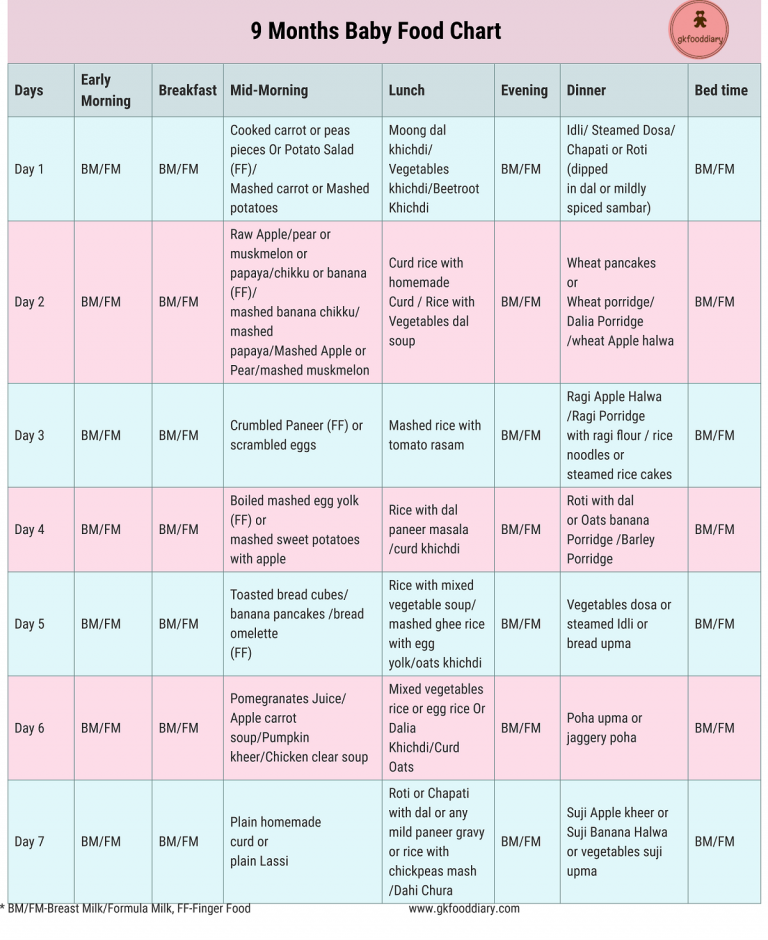
You have to come to a place where she gets enough to be satisfied but not so much she won’t eat her next meal. Focus on healthy foods and keep portions small.
Do Not Rush ItQuite frankly, sometimes it is easier to not have a baby’s meal at the same time the rest of the family is eating.
I found this true when nursing my babies. I couldn’t very well be fixing a meal at the same time I was breastfeeding a baby. I fed my baby her meal, then gave her finger foods while we eat for as long as I was breastfeeding (12-13 months old).
The day will come when your child is eating with you at meals rather than at different times. There is no reason you need to force it or make life more stressful by trying to get meals aligned.
I do think family meals are important, but you can have your child eat finger foods rather than stressing a meal earlier than you or your baby are ready for.
It is great to have your baby present at the meal. You can gain benefits of family meal time just by having your child at the table–she doesn’t have to be eating her official meal.
You can gain benefits of family meal time just by having your child at the table–she doesn’t have to be eating her official meal.
There really isn’t a right or wrong age for this. Do what seems right for your child and your family. People do this anywhere from 9 months to 24 months. That is quite a range.
For me, I didn’t even consider aligning meals until the child was done breastfeeding. So that put us at 12 months old before thinking about it.
I did have finger foods at meals earlier than that. It is a great thing to do if your child is awake for the meal. I would say so long as your child is awake during the meal time, have your child sitting with the family.
By the time your child is at one nap, she is likely ready for having meals with the family. At that point, she is eating breakfast with the family, up for lunch with family, and can eat dinner with the family if you shift dinner time or offer a snack post-nap.
A benefit of waiting until your toddler is a little older is she will be better at using a spoon. Then she can eat foods like cereals and yogurt while feeding herself.
Sample Schedule
Here is a sample schedule for a child who is eating with the family for meals:
- 7:00–wake up and eat breakfast with the family
- 9:30–morning nap
- 11:30–wake up and have lunch with family
- 2:00–afternoon nap
- 4:00–wake up and have a cup of milk (or breast milk or formula) and/or a small snack to tide over until dinner
- 5:30/6:00–dinner with family; finish the remainder of milk from snack time
- 7:30/8:00–last of milk needed for day, ready for bed, go to bed
What To Feed Your Baby
As you align your baby’s or toddler’s meals with family meals, you might wonder what exactly to feed your kiddo.
You can feed your little one finger foods as I discussed above. You can also start to feed your kiddo the same thing you are having for dinner if the ingredients are safe for your kiddo’s age.
I will not list what is safe and what is not. In my years as a parent, the American Academy of Pediatrics (AAP) has changed recommendations on many foods at least once (for example, when peanut butter is safe for a baby has changed). I recommend you consult with current guidelines and your baby’s doctor to know what is okay.
I would add what you are eating to baby’s diet as soon as you are able. This will help baby get used to different textures and new tastes as young as possible. This can help prevent power struggle in the future.
Related Posts- Baby’s Feeding Schedule With Solid Foods
- Baby Feeding Times for Solid Foods
- Family Mealtime: Preparing for Success
- Prioritizing Family Meals
Reader Questions
Salina said:
Ok, Val, I know I have 2 more months before I want to start weaning, and that the 3rd bfeeding time (now at 3 pm) will be the first to go, and I want James to start eating at our dinner time (around 6).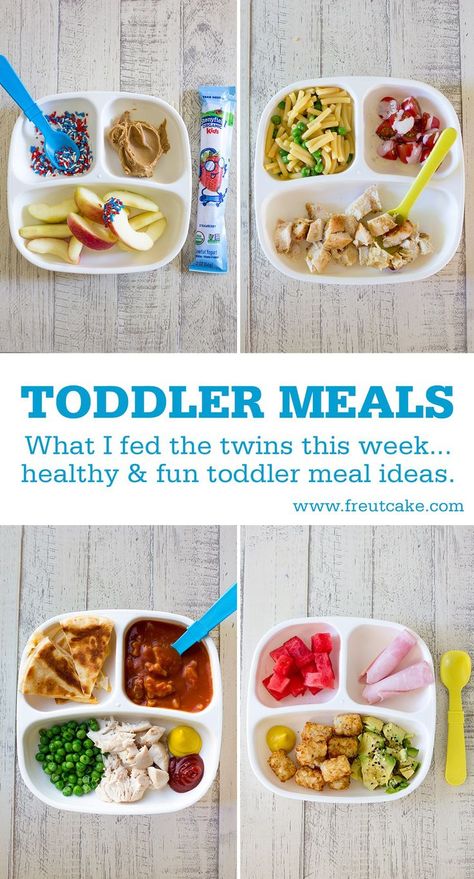 So for now, what should I do? How/when is Kaitlyn eating dinner now? I remember you said you’re giving her solids at her last feeding instead. But could I just bfeed at 3 then offer a snack of finger foods instead of a full meal, then feed him solids at our dinner time (6), then breast feed him again at 7? Would he even eat that close together?
So for now, what should I do? How/when is Kaitlyn eating dinner now? I remember you said you’re giving her solids at her last feeding instead. But could I just bfeed at 3 then offer a snack of finger foods instead of a full meal, then feed him solids at our dinner time (6), then breast feed him again at 7? Would he even eat that close together?
The Babywise Mom said:
This is how our evening goes right now: 3:30–breastfeed then some finger foods5:30ish–the family eats dinner. She will sometimes eat finger foods, but is usually not that hungry then. She will play with toys and just sit with us.7:00–nurse and dinner I would just offer him some finger foods at 6. I would try to make the finger foods something that isn’t filling and maybe even takes him a long time to eat. A couple of things I am thinking of are those Gerber rice puffs (it takes somewhere between 75-85 of them to equal 25 calories) or the biter biscuits (those take Kaitlyn a long time to eat the whole thing).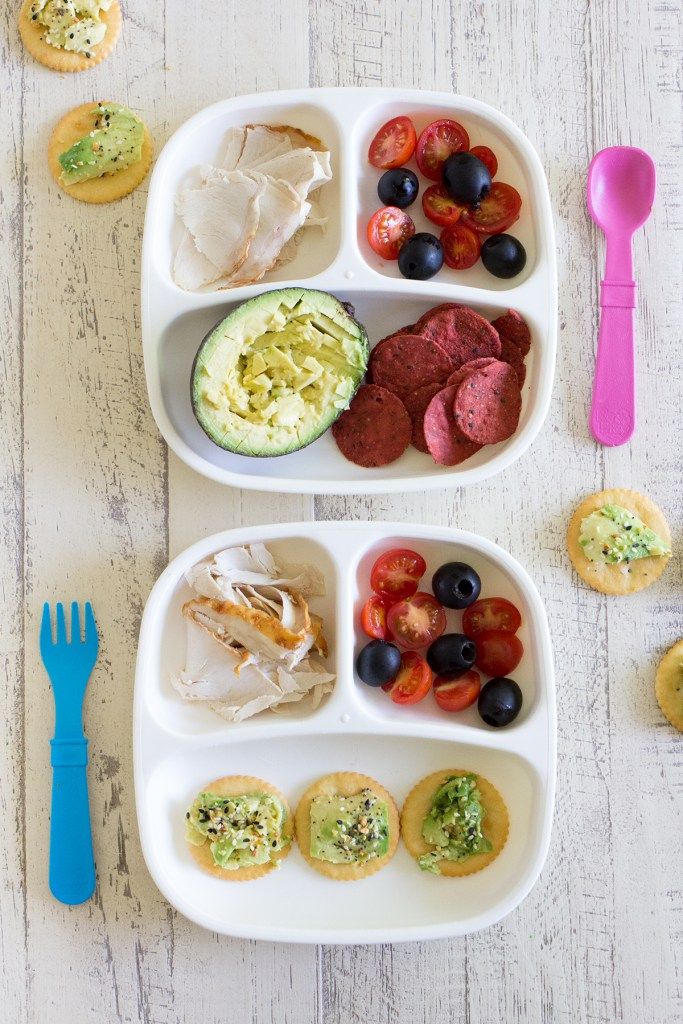 Once he is weaned from nursing, you will be able to do milk and a snack around the 3ish feeding, then do full dinner at 6 with the family.
Once he is weaned from nursing, you will be able to do milk and a snack around the 3ish feeding, then do full dinner at 6 with the family.
Hunter’s Mom said:
My son is 8 months and I am trying to figure out an eating schedule for him. How much formula should he be having a day? Should he have formula at every meal?
The Babywise Mom said:
I breastfeed, so I am not sure about number of ounces for an 8 month old. He should have 4-5 liquid feedings for sure each day, though. My kids both did 4 at that age, but some do 5. You might check out the book Super Baby Food for ideas on number of ounces for him.
LEM said:
It seems like my 6 month old is getting hungrier earlier at night. Right now he eat at 7, 11, 3, 7 with solids at 7, 11, and 3. He is on two naps so between the 3 and 7 feedings he is awake. Lately he struggles to eat at his schedules times throughout the day but I have found some tricks to get him to eat. Then, by 5pm-ish he has been incredible fussy and crying without being stopping at times. I knew he wasn’t sick and it was so unlike him to not be able to be consoled. I tried giving him some water and he took it s if he was starving and calmed down. So, I figured he was hungry. Should I just feed him earlier maybe? I was thinking I need to align meals with the family and maybe that will help?
Then, by 5pm-ish he has been incredible fussy and crying without being stopping at times. I knew he wasn’t sick and it was so unlike him to not be able to be consoled. I tried giving him some water and he took it s if he was starving and calmed down. So, I figured he was hungry. Should I just feed him earlier maybe? I was thinking I need to align meals with the family and maybe that will help?
The Babywise Mom said:
LEM, I wouldn’t align meals with the family yet; that is a bit young. I would guess that either:1-he still needs a short 3rd nap2-he is going through a growth spurt and is just hungry earlier3-he just had a growth spurt and now needs more sleep (they need more sleep than usual after the growth spurt of eating is over).
LEM said:
Thanks. I think it was a growth spurt time. I have ended up feeding him about 6:30pm instead of 7pm and he goes down for bed a half hour early (7:30pm)I’m still having issues with him being hungry every 4 hours during the day though. He takes his morning bottle and evening bottle fine, but during the day is a different story. I usually have to wake him up from his naps and it’s painful to go in there and know I’m going to have to fight him to drink his bottle. What would be an appropriate age to move to a family schedule?When that does happen, how would I rearrange the schedule? Our morning waketime and bedtime (7am, 7:30pm) works great for us and his waketime is at 2hr 15min right now.
He takes his morning bottle and evening bottle fine, but during the day is a different story. I usually have to wake him up from his naps and it’s painful to go in there and know I’m going to have to fight him to drink his bottle. What would be an appropriate age to move to a family schedule?When that does happen, how would I rearrange the schedule? Our morning waketime and bedtime (7am, 7:30pm) works great for us and his waketime is at 2hr 15min right now.
The Babywise Mom said:
LEM, Mine are closer to a year old when meals are aligned with the family–at least all of them. On 4 hours, breakfast is with family, lunch is with family, but dinner usually isn’t. You can wait up to 30 minutes after waking if needed before feeding him.
LEM said:
I just recently moved my 10 month old’s schedule to align with the family’s. Our previous feeding schedule was:7am – bottle, solids11am – bottle, solids3pm – bottle, solids6:30 – bottle, bath, then bed by 7:15pmNow it looks like this:7am – bottle, solids11:30am – bottle, solids3:30/4- bottle5:30/6 – solids6:30 – bottle, bath, then bedWith this new schedule I feel like his is eating all the time in the afternoon. I guess because I am essentially breaking up the previous 3pm feeding into two sessions. At his “snack” time he takes a full bottle, at dinner a full meal, and another full bottle afterward. He just got over being sick so I know he’s eating more than usual to make up for lost time but the timing of the snack, dinner, then night bottle seems so close together. I feel like the whole purpose to have them take 3 full meals, not grazing all day has been lost with this new schedule. Bedtime has to be at 7:15 because he needs about 12 hours of sleep (in fact I think many times he should go down by 7).Here’s an example: The other day I gave him a bottle at 3:30 for his snack. He took 10 ounces which is a lot for him. Then I went out to an early dinner with a friend where he continued to snack on cherrios and a biter biscuit the entire time we were there. Once we got home it was time for his dinner and he ate a full meal of his regular solids. Immediately afterward, it was time for his 6:30 bottle and he took 7 ounces.
I guess because I am essentially breaking up the previous 3pm feeding into two sessions. At his “snack” time he takes a full bottle, at dinner a full meal, and another full bottle afterward. He just got over being sick so I know he’s eating more than usual to make up for lost time but the timing of the snack, dinner, then night bottle seems so close together. I feel like the whole purpose to have them take 3 full meals, not grazing all day has been lost with this new schedule. Bedtime has to be at 7:15 because he needs about 12 hours of sleep (in fact I think many times he should go down by 7).Here’s an example: The other day I gave him a bottle at 3:30 for his snack. He took 10 ounces which is a lot for him. Then I went out to an early dinner with a friend where he continued to snack on cherrios and a biter biscuit the entire time we were there. Once we got home it was time for his dinner and he ate a full meal of his regular solids. Immediately afterward, it was time for his 6:30 bottle and he took 7 ounces. Does this sound OK to be eating so frequently in the evenings? I don’t know if I just need some time to adjust to this new schedule and realize that this is OK. But for some reason, breaking up that 3pm feeding seems like I’m going against the BW principle of not feeding bottle at one time then solids a hour or two later.
Does this sound OK to be eating so frequently in the evenings? I don’t know if I just need some time to adjust to this new schedule and realize that this is OK. But for some reason, breaking up that 3pm feeding seems like I’m going against the BW principle of not feeding bottle at one time then solids a hour or two later.
The Babywise Mom said:
LEM, this is the way I would do it:3:30–bottle with solids OR just bottle5:30–finger foods while family eats dinner6:30–bottle with solids OR just bottle (depending on what you did at 3:30)Once he is able to have only 3 liquid feedings in a day, you can more easily have meals the same as the family’s.
LEM said:
Thanks! I think will stick with4:30 bottle and solids5:30 finger foods while family has dinner6:30 BottleSo..once he has only 3 liquid feedings in a day what bottle would I be taking away and what would that adjustment look like?Also, since his naps can be from 1.5 hours to 2 hours, his feeding schedule varies sometimes.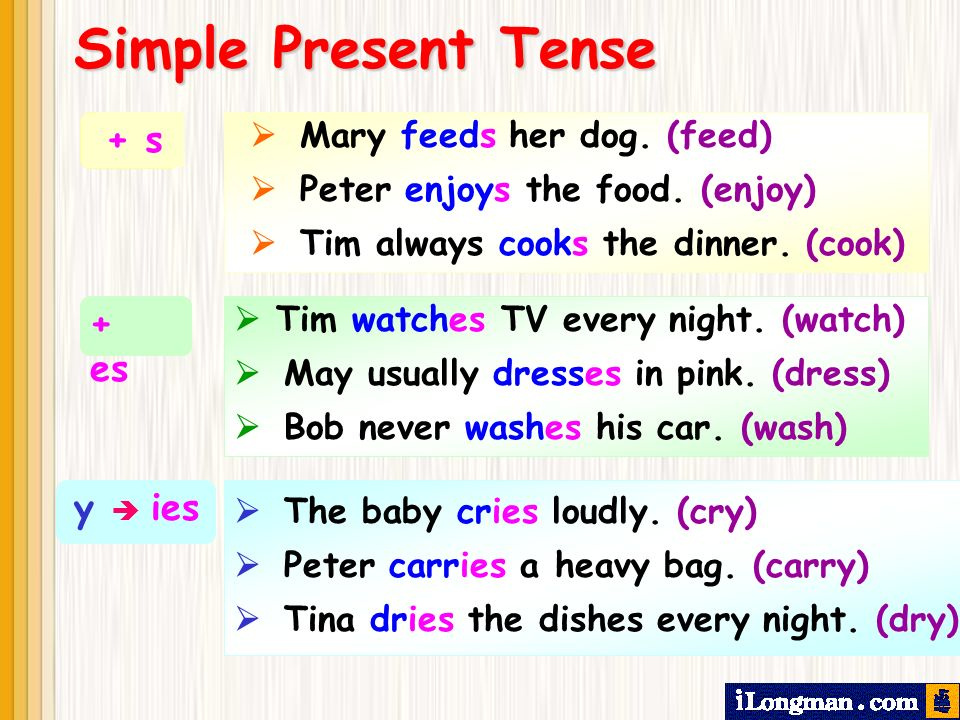 He has 2.5 hours of waketime, so he goes down at 9:30 and sometimes wakes on his own at 11 or I wake him at 11:30. This means that sometimes he eats at 11 or 11:30, depending on the nap. Then, his next nap starts depending on when he woke up from his first nap (so maybe 1:30 or maybe 2). And once again, he will sleep 1.5 or 2 hours so his third feeding will be at 3, 3:30, or possibly 4 (if he went down at 2 and slept 2 hours). I wanted your opinion on that. What are your thought on this slight variation from day to day? Should I wake him after 1.5 hours no matter what to keep him on schedule? Or, should I feed every 4.5 hours even if he doesn’t sleep to his next feeding? I just wasn’t sure if I should be varying it as I am now depending on his naps.
He has 2.5 hours of waketime, so he goes down at 9:30 and sometimes wakes on his own at 11 or I wake him at 11:30. This means that sometimes he eats at 11 or 11:30, depending on the nap. Then, his next nap starts depending on when he woke up from his first nap (so maybe 1:30 or maybe 2). And once again, he will sleep 1.5 or 2 hours so his third feeding will be at 3, 3:30, or possibly 4 (if he went down at 2 and slept 2 hours). I wanted your opinion on that. What are your thought on this slight variation from day to day? Should I wake him after 1.5 hours no matter what to keep him on schedule? Or, should I feed every 4.5 hours even if he doesn’t sleep to his next feeding? I just wasn’t sure if I should be varying it as I am now depending on his naps.
The Babywise Mom said:
LEM, With three liquid feedings, I do one at breakfast, one at lunch, and one at dinner with the family. Kaitlyn went to three liquid at a year, but Brayden didn’t until about 18 months, so just take it at his pace. I think the variation on the feedings is fine. If you want more consistency, the days he wakes earlier you can have him wait 30 minutes before eating if you want to. So you plan to eat at 11:30 each day. If he wakes at 11, you have him wait until 11:30 if he can.
I think the variation on the feedings is fine. If you want more consistency, the days he wakes earlier you can have him wait 30 minutes before eating if you want to. So you plan to eat at 11:30 each day. If he wakes at 11, you have him wait until 11:30 if he can.
Kelly said:
My daughter will be 7 months next week. She has been on a 4 hour schedule for a month and started solids about the same time. She recently dropped her third nap. Her schedule now is:
7:00 nurse/solids
9:00 nap
11:00 nurse/solids
1:00 nap
3:00 nurse/solids
7:00 nurse
7:30 bed
I’m running into two issues. First she doesn’t seem really interested in solids at 3. Second, she seems very hungry at 5:30 and wants what we’re eating. I was reading on Growing Kids and noticed that Connie gave the following schedule option:
8:00am Bottle / Nurse
8:30am Rice cereal mixed with breast milk, Fruit baby food
10:00am Nap
12:00pm Bottle / Nurse
12:30pm Vegetable baby food, Fruit baby food
2:00pm Nap4:00pm Bottle / Nurse
6:00pm Vegetable baby food, Rice cereal introduced solid finger foods while Mom and Dad eat dinner
7:45pm Bottle / Nurse
8:00pm Sleep for the night
Both problems might be solved if I nursed at 3 and did solids at 5, but I thought that was considered snacking according to Babywise II. Could you clarify if this is ok and possibly suggest other solutions? Thanks in advance for your advice!
Could you clarify if this is ok and possibly suggest other solutions? Thanks in advance for your advice!
The Babywise Mom said:
Kelly, I would consider that snacking, but you can certainly try it if you want to. I know the Baby Whisperer recommends doing liquid, then solids two hours later, then liquid, etc. I would do just nursing at 3, give her finger foods when the family eats dinner, and then nurse and solids at 7.
Kristin said:
Hello! I am struggling to figure out my sons eating schedule and weaning process. He is only 9.5 months old, but I am just trying to prepare for all of these upcoming things. My first question is: Once my son is beginning to be weaned and starts eating dinner with us (instead of at 3), should I offer the milk in the sippy at 3 for a snack and then eat dinner around 5:30? Then nurse at 7:30 (until weaned from this feeding)? Is this the best way to do this? It seems like a long time for him to wait to eat. Secondly, I am concerned about weaning and would like some advice. My son will be 1 year at the beginning of October. My goal is to have him weaned by his birthday because we are moving to Australia in early November and I would like to be well established with this by then. The only issue with this is that we will be at our training for Australia for the 3 weeks before his birthday, so I will be busy those weeks and he will be in the nursery at the training site. Any advice on what the best timing would be for weaning in order to make this a smooth process? He also doesn’t really drink anything from a sippy right now, so this worries me for the future. (He refuses bottles, so this is not an option either). Any advice would be much appreciated! Thank you!
Secondly, I am concerned about weaning and would like some advice. My son will be 1 year at the beginning of October. My goal is to have him weaned by his birthday because we are moving to Australia in early November and I would like to be well established with this by then. The only issue with this is that we will be at our training for Australia for the 3 weeks before his birthday, so I will be busy those weeks and he will be in the nursery at the training site. Any advice on what the best timing would be for weaning in order to make this a smooth process? He also doesn’t really drink anything from a sippy right now, so this worries me for the future. (He refuses bottles, so this is not an option either). Any advice would be much appreciated! Thank you!
The Babywise Mom said:
Kristin, Yes, at first, you will need to have some sort of snack. Milk might not be enough on its own. So definitely do a light snack at 3 and then dinner with the family. He sounds like McKenna with the drinking. She wouldn’t drink from bottles and wouldn’t drink milk from sippys. Continue to offer water in a sippy for him right now. So would you be able to go in to him while he is in the nursery to feed him? If so, I think you can still start 2-3 weeks before his birthday. If not, you need to be at least done with the middle two feedings by then (I am assuming you would be able to breastfeed in the morning and night). Then you just have to offer him his milk in a sippy and wait for him to start drinking it. Try to not stress over it. I would also keep water with him at that point. McKenna has a sippy of water with her in bed so she gets enough liquid. Also, don’t stress about the milk exactly. He can get his dairy from cheese and yogurt (and other dairy products). If you look at McKenna’s summaries right around her birthday, you will see some info on how I did that. She still only drinks 8 ounces of milk a day, so I still offer her other forms of dairy.
She wouldn’t drink from bottles and wouldn’t drink milk from sippys. Continue to offer water in a sippy for him right now. So would you be able to go in to him while he is in the nursery to feed him? If so, I think you can still start 2-3 weeks before his birthday. If not, you need to be at least done with the middle two feedings by then (I am assuming you would be able to breastfeed in the morning and night). Then you just have to offer him his milk in a sippy and wait for him to start drinking it. Try to not stress over it. I would also keep water with him at that point. McKenna has a sippy of water with her in bed so she gets enough liquid. Also, don’t stress about the milk exactly. He can get his dairy from cheese and yogurt (and other dairy products). If you look at McKenna’s summaries right around her birthday, you will see some info on how I did that. She still only drinks 8 ounces of milk a day, so I still offer her other forms of dairy.
Happy Lady said:
Hi! Thank you for running this site.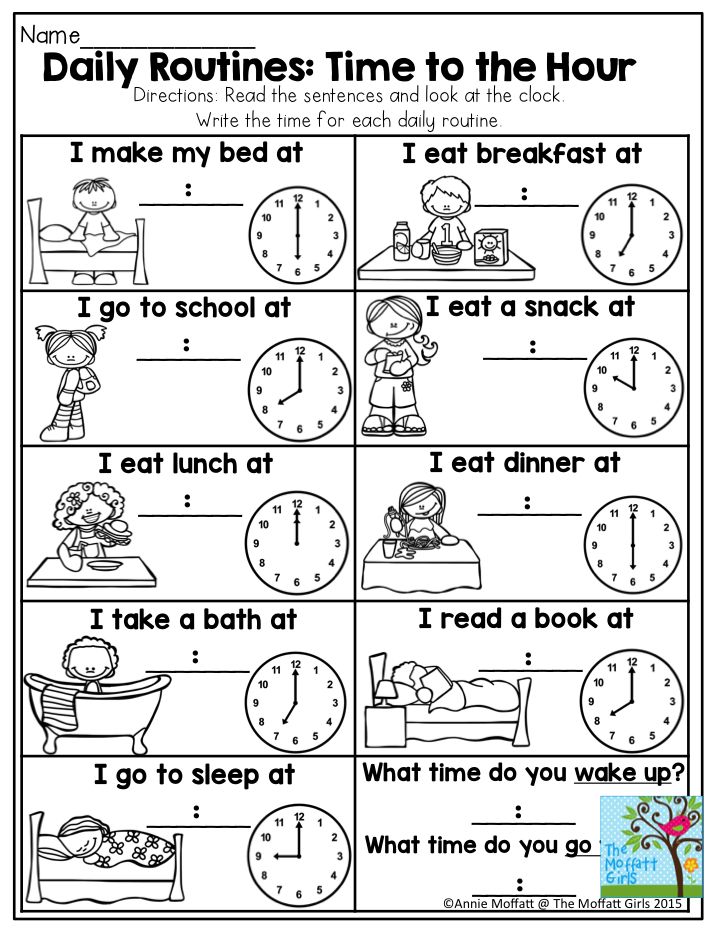 I’m sure it keeps you VERY busy! You’re willingness to help all of us in need is such a blessing! I’m looking for some direction with my 8 1/2 month old. Her normal schedule is
I’m sure it keeps you VERY busy! You’re willingness to help all of us in need is such a blessing! I’m looking for some direction with my 8 1/2 month old. Her normal schedule is
7:30 – nurse/solids
9:30 – nap
11:30 – nurse/solids
1:30 or 2:00 nap
3:30 – nurse (snack)
6:00 – nap
7:00 – nurse/solids (dinner)
9:00 – nurse/bedtime
I believe my daughter has been eating too much (and is ready to drop a feeding). She is CONSTANTLY spitting up and for some of her feedings, especially snack time, she doesn’t seem very hungry. I normally nurse her on one side, give her solids, then nurse the other side (except for snack & bedtime when there are no solids). I was wondering if it is okay to go to a 4 1/2 hour schedule at this age, which would also knock her feedings down to 4 a day, or should I just not continue nursing her after I offer her the solids (only offer one breast per feeding). Or should I try to move her dinner to 7:30 and drop the bedtime nighttime feeding? I’m just not sure whether she would be able to wait until 7:30 in morning for her next feeding. Any suggestions? I don’t remember going through this confusion with my other 2 children, but we all know how each child is different (or maybe I have major “mommy brain”!) Thanks so much for your time.Stacy
Any suggestions? I don’t remember going through this confusion with my other 2 children, but we all know how each child is different (or maybe I have major “mommy brain”!) Thanks so much for your time.Stacy
The Babywise Mom said:
What you want to do is drop the 9 PM nursing. If she needs, you can move the 7 feeding back to 7:30. It is easy to forget if you don’t have it all written down 🙂
Happy Lady said:
I’ve dropped the 9:00 feeding, and my daughter has been doing great with the new schedule. I was surprised that she could go 12 hours between feedings at night. I really don’t think I dropped that 9:00 feeding with my other girls until I was starting to wean them. I wish I would have discovered your blog back then! Thanks again!
The Babywise Mom said:
Thanks for sharing your success! It is scary to move them to sleeping longer at night, but they usually do great. It is lovely isn’t it!
This post originally appeared on this blog in December 2007
What to feed a child for dinner? Food for peace and sound sleep
According to science, dinner should be 20% of the daily diet. But children, especially small children, reshape the daily routine in their own way. Their life is filled with events: educational toys, games, learning “in an adult way” in kindergartens and development schools, and just the buzzing world around. A TV (and who was put to a computer from the cradle), fantasies bursting with a fragile, but already overdeveloped brain, observations, accumulated emotions ... Increasingly, a child cannot be calmed down in the evenings. More and more children do not sleep well at night. The most accessible way for a child to get quick positive sensations is food. Babies “hang” on their chests, older children wake up at night: either kefir or some water ... and mothers again puzzle over: what to feed more satisfying in the evening so that they sleep better? ..
But children, especially small children, reshape the daily routine in their own way. Their life is filled with events: educational toys, games, learning “in an adult way” in kindergartens and development schools, and just the buzzing world around. A TV (and who was put to a computer from the cradle), fantasies bursting with a fragile, but already overdeveloped brain, observations, accumulated emotions ... Increasingly, a child cannot be calmed down in the evenings. More and more children do not sleep well at night. The most accessible way for a child to get quick positive sensations is food. Babies “hang” on their chests, older children wake up at night: either kefir or some water ... and mothers again puzzle over: what to feed more satisfying in the evening so that they sleep better? ..
Dinner should be light. This fact does not depend on the age of the child, but it depends on the individual routine and the amount of food that has entered the body during the day. If the child goes to bed late (after 22-23. 00), he should have dinner at 19.30-20.00 - and a second dinner in the form of a glass of milk or kefir at night is desirable. Children who receive breast milk or formula do not count, everything is fine with evening and night food, it is correct and easily digestible. In general, dinner at 20.00 is considered ideal for any person. If the child goes to bed at 21.00 - dinner is shifted to 19.00 (plus or minus half an hour). And at night he can also drink kefir, bifidok or milk, this ritual prolongs the feeling of satiety, soothes.
00), he should have dinner at 19.30-20.00 - and a second dinner in the form of a glass of milk or kefir at night is desirable. Children who receive breast milk or formula do not count, everything is fine with evening and night food, it is correct and easily digestible. In general, dinner at 20.00 is considered ideal for any person. If the child goes to bed at 21.00 - dinner is shifted to 19.00 (plus or minus half an hour). And at night he can also drink kefir, bifidok or milk, this ritual prolongs the feeling of satiety, soothes.
Night hunger: do you need a hearty dinner?
Many parents worry when their child wakes up several times during the night and asks for food. Scientists have long found out that the feeling of hunger, which illogically (given sufficient nutrition) torments us during the day and even at night, is actually a feeling of thirst. A person wants to drink, not eat. Our body gives signals: we need water. To dissolve and expel street toxins, tone yourself up. Even an adult confuses thirst with hunger and intercepts another piece instead of a glass of water. The child may also want to drink at night, for most children this is normal and is not associated with any abnormalities. But some children unconsciously twist the desire to "drink" into "eat." Parents are people too, they want to rest at night, so you have to fight with constant night jumps and demands. But many children really need to drink water or kefir at night, this simple action is better to do than to deal with the consequences of weaning. Repeated requests (2-4 times a night) signal that the reason is not food or drink at all.
Even an adult confuses thirst with hunger and intercepts another piece instead of a glass of water. The child may also want to drink at night, for most children this is normal and is not associated with any abnormalities. But some children unconsciously twist the desire to "drink" into "eat." Parents are people too, they want to rest at night, so you have to fight with constant night jumps and demands. But many children really need to drink water or kefir at night, this simple action is better to do than to deal with the consequences of weaning. Repeated requests (2-4 times a night) signal that the reason is not food or drink at all.
Everyone is familiar with the old grandmother's remedy: in order for the child to sleep better, he needs to be fed more satisfyingly at night. In this case, the parents will receive peace of mind, but not the child. His body will not rest, it will be engaged in the digestion of food. Often such excesses - semolina or meat dishes at night - lead to gastrointestinal diseases.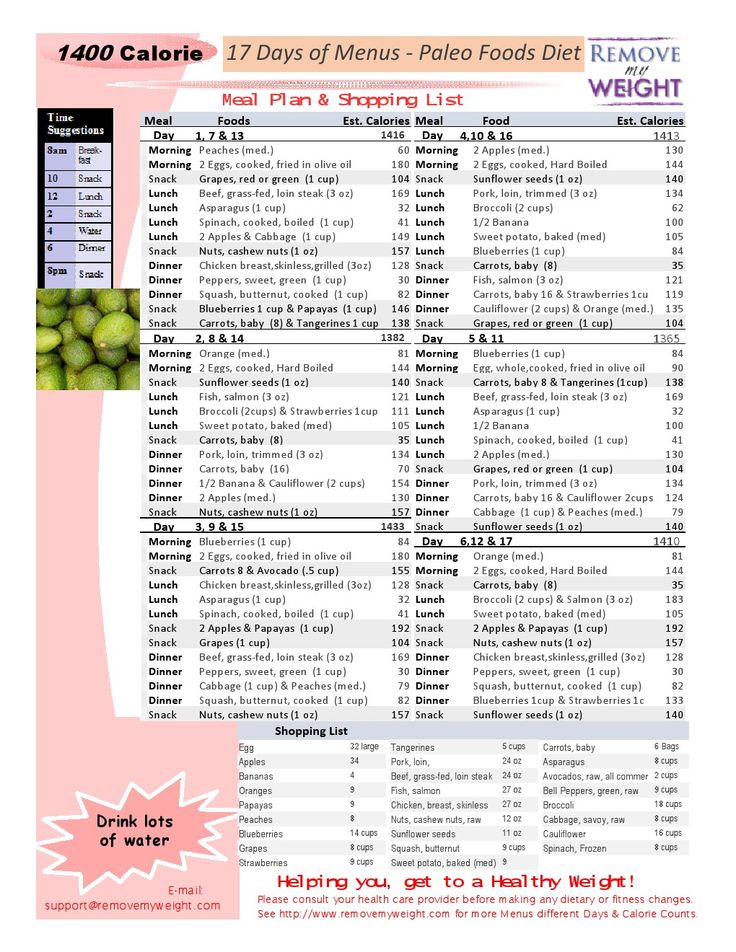 Drowsiness after eating is natural, but severe drowsiness caused by "cementing" the stomach is not good for anyone. Yogis call this state "tamasic" - some food causes a state of "tamas": lethargy, laziness, pollution with toxins. There are dozens of reasons why a child often wakes up at night, and hunger is just one of many. Without removing the main reason, it is pointless to feed meat at night - one link will pull the other, the chain of problems will close sooner or later. Restless sleep is associated with a lack of attention (gaining attention from parents whom the child has not seen for most of the day), unconscious fear (something happened during the day, hooked, does not give rest), disturbed microclimate (dry air, heat, stuffiness), impaired breathing (minor nasal congestion). In all these cases, the child is free to wake up and demand to drink and eat, in fact, wanting to eliminate the true problem, not being able to formulate, understand, and calculate it on his own.
Drowsiness after eating is natural, but severe drowsiness caused by "cementing" the stomach is not good for anyone. Yogis call this state "tamasic" - some food causes a state of "tamas": lethargy, laziness, pollution with toxins. There are dozens of reasons why a child often wakes up at night, and hunger is just one of many. Without removing the main reason, it is pointless to feed meat at night - one link will pull the other, the chain of problems will close sooner or later. Restless sleep is associated with a lack of attention (gaining attention from parents whom the child has not seen for most of the day), unconscious fear (something happened during the day, hooked, does not give rest), disturbed microclimate (dry air, heat, stuffiness), impaired breathing (minor nasal congestion). In all these cases, the child is free to wake up and demand to drink and eat, in fact, wanting to eliminate the true problem, not being able to formulate, understand, and calculate it on his own.
What is a dense and light supper? Density criterion
If you look closely at the recipes for breakfast, afternoon tea and dinner, you can see that they are similar in many ways. Variations of products, combinations of cottage cheese, fruits and cereals, light soups and casseroles - all this is equally suitable for breakfast, afternoon tea and dinner.
Variations of products, combinations of cottage cheese, fruits and cereals, light soups and casseroles - all this is equally suitable for breakfast, afternoon tea and dinner.
Children's dinner includes food that the child "did not get" during the day. If there was a lack of cottage cheese and fruits, we give cottage cheese and fruits. If the food, in principle, was stupid, then we need vegetables, salads, cereals. Kindergarten children lack “live” fermented milk products, egg dishes, almost all kindergarten food is thermally processed, so in the evening you can unload the stomach without offering it anything boiled or baked (eggs, raw vegetables, salads, yogurts, cottage cheese). Well, if there was no dinner in the kindergarten, then we are having dinner at home like an adult.
People often ask: is it not harmful to feed porridge for dinner, is it not too heavy a meal. Look at the child! The child will always give a signal which food is preferable for him.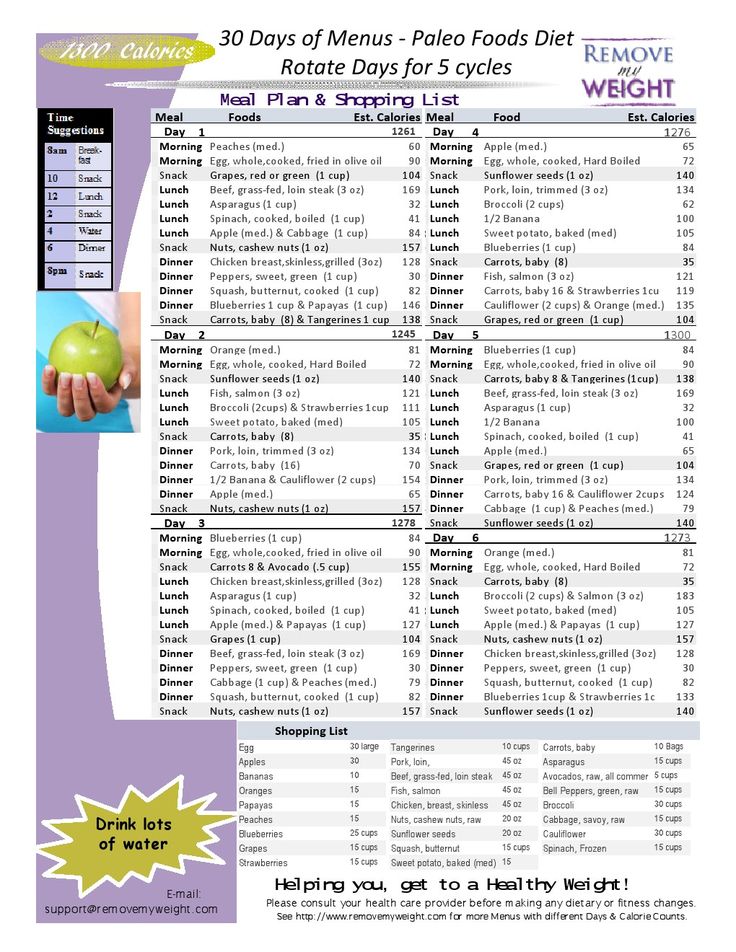 If the sleep is restless, the child cannot fall asleep for a long time - try experimenting with dinner. Porridge is a normal living food, it is better than sandwiches, convenience foods, cereals, cookies, and so on. Porridge can be harmful if it is not absorbed by a particular child for some reason. In other cases, porridge may not be harmful. We found something to worry about - thousands of parents do not know how to push anything into the child, while others worry about porridge - heavy, not heavy ... normal! But if there are still doubts about the need for evening porridge, make it easier. Do not give millet, semolina, barley porridge for dinner, if possible, do not use milk and sugar, replacing them with fruit puree, dried fruits, a spoonful of honey - or add milk mixture. "Light" porridge for the night is buckwheat, oatmeal and any "children's" (powder). Semolina, in addition to other stupefying properties, interferes with the absorption of vitamins and microelements accumulated during the day.
If the sleep is restless, the child cannot fall asleep for a long time - try experimenting with dinner. Porridge is a normal living food, it is better than sandwiches, convenience foods, cereals, cookies, and so on. Porridge can be harmful if it is not absorbed by a particular child for some reason. In other cases, porridge may not be harmful. We found something to worry about - thousands of parents do not know how to push anything into the child, while others worry about porridge - heavy, not heavy ... normal! But if there are still doubts about the need for evening porridge, make it easier. Do not give millet, semolina, barley porridge for dinner, if possible, do not use milk and sugar, replacing them with fruit puree, dried fruits, a spoonful of honey - or add milk mixture. "Light" porridge for the night is buckwheat, oatmeal and any "children's" (powder). Semolina, in addition to other stupefying properties, interferes with the absorption of vitamins and microelements accumulated during the day.
Even among pundits there is no agreement about food at night: what it should be, whether it is necessary, whether it is harmful. Some venerable nutritionists are of the following opinion: our body spends energy during the day, and accumulates at night, food is the fuel for accumulation, which means that eating at night is not forbidden. That is, the child can eat before going to bed - not at dinner, but right before going to bed. It happens. Some kids need it. It's OK. Children live by different laws than adults. When you find yourself in this situation (when the child has dinner before bedtime), do not remember all the horrors of the world written by hardworking journalists about junk food at night. Everything needs an individual approach. The child sleeps well, he has no health problems, is overweight and excitable - which means that a plate of light porridge or scrambled eggs is not a problem that is worth attention and loss of nerve cells on both sides.
Also ideal dishes for dinner are:
- Cottage cheese, cottage cheese dishes (casseroles, syrniki), cottage cheese with fruits.
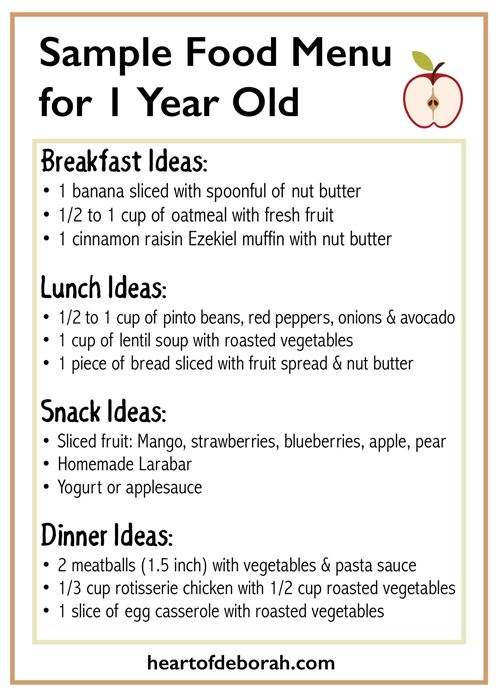
- Omelet, vegetables in an omelet, boiled eggs.
- Mixed vegetables, mashed potatoes, stews, casseroles, vegetable cutlets and zrazy, vegetables with rice, buckwheat. Raw vegetables.
- Salads.
- Fruits - bananas and green apples. Banana calms, increases the feeling of satiety, and green apples are rich in "night" elements - calcium and iron, magnesium, potassium.
- Baked fruits: apples, pears.
- Any fermented milk products - kefir, yogurt, bifidok, acidophilus. Cheese.
Wrong dinner
Wrong dinner is obtained by indulging the grasping reflexes of a child who does not know where to put his energy and excitability after a busy day. This is especially true for "kindergarten" children, we talked about their dinner and the reasons for "nervous hunger" here:
http://www.u-mama.ru/read/article.php?id=4717
http://www.u-mama.ru/read/article.php?id=4736
In the evening, an active child just as actively gets the attention of adults, as if afraid of not being in time.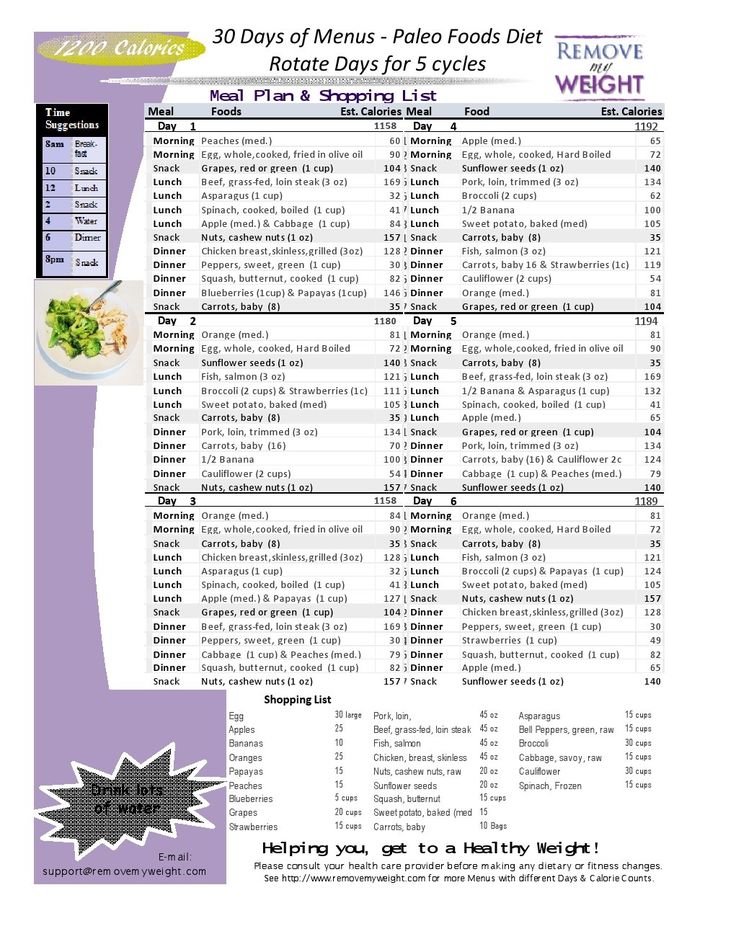 He replaces the requests “stay with me” or “calm me down” with a demand for food that is more accessible to children's understanding. He ate the first, third, tenth, begged for candy, the second, and still wants to eat, more ... Make sure that the child does not stuff everything into himself, especially incompatible foods. Want to eat a lot? – please, but only through breaks. Ate a plate of stew - revered. I drank yogurt, ate a banana - we played. So we streamline the evening "zhor" and help the child to correctly understand his feelings.
He replaces the requests “stay with me” or “calm me down” with a demand for food that is more accessible to children's understanding. He ate the first, third, tenth, begged for candy, the second, and still wants to eat, more ... Make sure that the child does not stuff everything into himself, especially incompatible foods. Want to eat a lot? – please, but only through breaks. Ate a plate of stew - revered. I drank yogurt, ate a banana - we played. So we streamline the evening "zhor" and help the child to correctly understand his feelings.
One simple truth is able to learn any child, if you do not belittle his mental abilities in advance, do not think “yes, mine is never!” It is necessary to constantly inspire the baby that a hungry person will eat everything that is offered to him. Do you want to eat? So, eat what they give you. A child requesting food often has a very specific cookie or hidden candy in mind. As if checking parental resilience. The sooner you instill in children the right attitude to food, to their own feelings, the sooner they will form their own food culture. Disobeys, runs away, throws a tantrum, cries? - anyway, repeat from time to time that a hungry person will eat what is offered, and sweet desserts and all sorts of sausages are not food for the hungry, but pampering for the well-fed. Of course, all this is not uttered in the boring voice of an admirer of Leo Tolstoy, lifting his finger over the swirling head of a baby. In a positive, confident tone, carry your thought through the days and weeks - it will definitely be postponed.
Disobeys, runs away, throws a tantrum, cries? - anyway, repeat from time to time that a hungry person will eat what is offered, and sweet desserts and all sorts of sausages are not food for the hungry, but pampering for the well-fed. Of course, all this is not uttered in the boring voice of an admirer of Leo Tolstoy, lifting his finger over the swirling head of a baby. In a positive, confident tone, carry your thought through the days and weeks - it will definitely be postponed.
Let's not focus on the "harmfulness", each family has its own traditions on this matter, its own problems, its own worldview. You should not give buns with chocolate, sweets, ice cream, hot sandwiches for dinner. Children are children, we love to pamper them, and no one has the right to condemn parents for this. But still - for the sake of strengthening immunity, for the sake of resistance to viruses and bacteria, for the sake of a healthy nervous system, one should gradually change the quality of food, especially in the evening, in small things.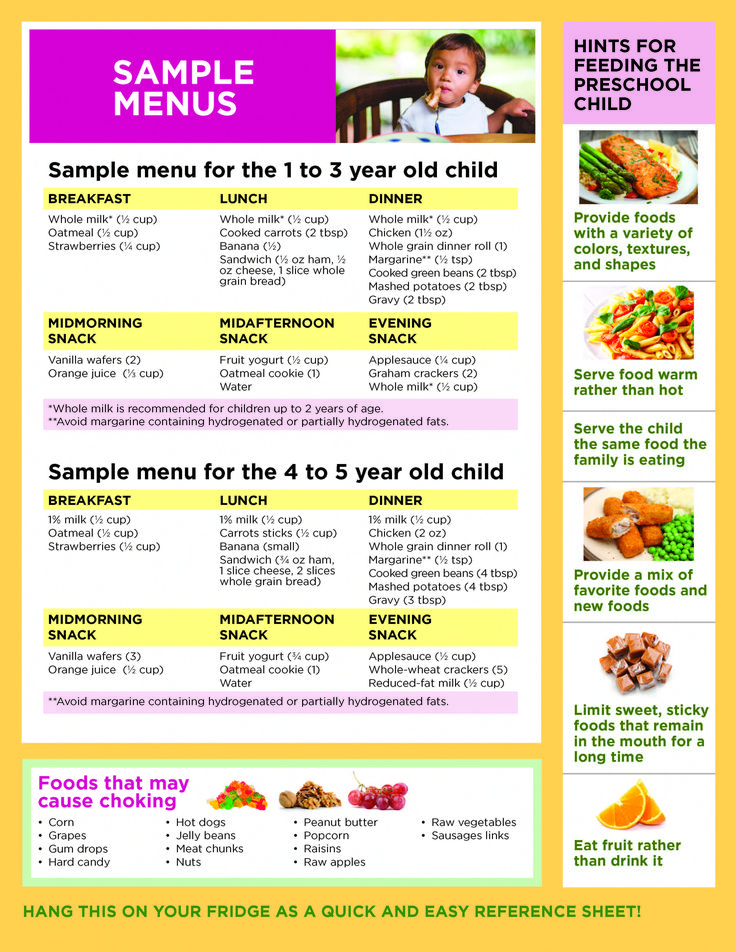 In the evening and at night, the body gratefully accepts and digests clean food. At night, it merges with the cosmos, and it would be nice not to spoil the feeling of flight and relaxation with food that spoils the metabolism, point-wise killing the “bricks” of health (vitamins, trace elements) that came with the daytime food. Choose simpler sweets, cancel fried foods, cholesterol explosions in the form of melted cheese on bread, pasta and casseroles. In the evening, the child is not given meat dishes - the meat is digested for 4-6 hours, it does not bring any benefit. The exception is steam fish, as well as canned meat for baby food, they are added in some quantities to dinner at any age. And, of course, it is extremely harmful to give a child sausages, sausages and other messes of chemicals and salts for dinner. Charlottes, pancakes and pancakes also can not be called the right dish for dinner, but for a change - you can do it in small quantities.
In the evening and at night, the body gratefully accepts and digests clean food. At night, it merges with the cosmos, and it would be nice not to spoil the feeling of flight and relaxation with food that spoils the metabolism, point-wise killing the “bricks” of health (vitamins, trace elements) that came with the daytime food. Choose simpler sweets, cancel fried foods, cholesterol explosions in the form of melted cheese on bread, pasta and casseroles. In the evening, the child is not given meat dishes - the meat is digested for 4-6 hours, it does not bring any benefit. The exception is steam fish, as well as canned meat for baby food, they are added in some quantities to dinner at any age. And, of course, it is extremely harmful to give a child sausages, sausages and other messes of chemicals and salts for dinner. Charlottes, pancakes and pancakes also can not be called the right dish for dinner, but for a change - you can do it in small quantities.
Most importantly, do not try to feed a hungry child in the evening, if he is hungry only in your imagination. He doesn’t want to eat, he doesn’t want to be seated at the table - make jelly, fruit drink or compote, drink a healthy drink and calm down yourself.
He doesn’t want to eat, he doesn’t want to be seated at the table - make jelly, fruit drink or compote, drink a healthy drink and calm down yourself.
Dinner Recipes (ages 1.5-6)
Zest Risotto
200 g cauliflower, 2 carrots, 1 cup rice, 4 tbsp. pitted prunes, 2 tbsp raisins, 2 tbsp. butter.
Grate carrots, saute in oil, add a little water, simmer for 10 minutes. Scald the cauliflower and separate into florets. Pour rice with 2 cups of hot water, salt and add prunes and raisins soaked in water beforehand. Add vegetables and simmer the risotto for 40 minutes over low heat. Sprinkle with finely chopped parsley before serving.
Carrot and apple soufflé
350 g carrots, 60 g sour cream or milk, 30 g semolina, 1 apple, ½ egg, ½ tbsp. sugar, 2 tsp butter, salt (to taste).
Grate peeled apple and carrot. Grind the egg yolk with sugar, beat the protein into a fluffy foam. Combine the apple and carrots, add sour cream or milk, yolk with sugar, semolina, salt, gently add whipped protein, mix. Put the mass in a greased form, bake in the oven or steam for 30-35 minutes.
Combine the apple and carrots, add sour cream or milk, yolk with sugar, semolina, salt, gently add whipped protein, mix. Put the mass in a greased form, bake in the oven or steam for 30-35 minutes.
Africa omelet
600 g carrots, 400 g milk, 4 eggs, 4 tbsp. grated hard cheese, 2 tbsp. butter, 2 tbsp. flour, 2 tbsp. orange juice, salt.
Boil and puree carrots. Beat eggs, adding milk and flour, cheese and juice, salt, combine with carrot puree. Pour the mass into the pan and fry the omelet until cooked - or bake.
Broccoli and yogurt soup
125 g plain yoghurt, 1 cup broccoli, 2 potatoes, 1 carrot, 1 tbsp. grated hard cheese, 1 tsp olive oil.
Pour boiling water over broccoli so that the water barely covers them, cook for 5 minutes over low heat. Grate potatoes and carrots, sauté in olive oil with constant stirring. Add sautéing to the soup, cook it for another 10 minutes, cool slightly.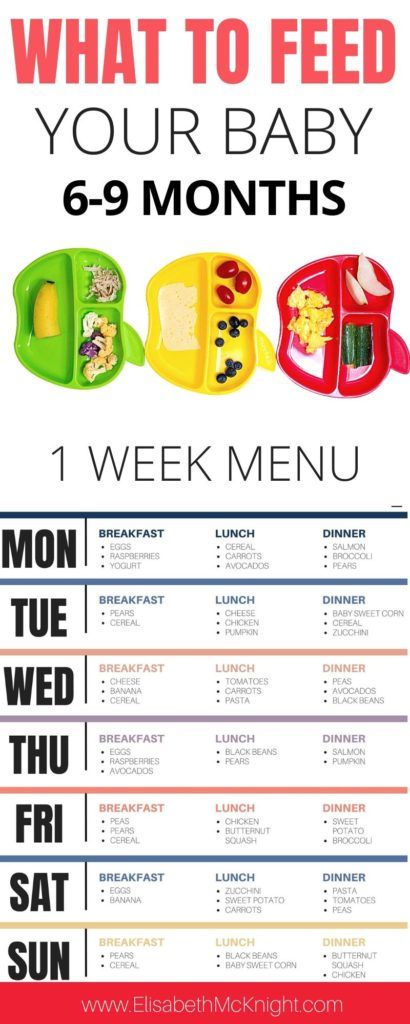 Pour yogurt into soup, stirring constantly. You can add cheese.
Pour yogurt into soup, stirring constantly. You can add cheese.
Millet curd porridge
2/3 cup milk or water, ½ cup cottage cheese, 1/3 cup millet, 2 tbsp. yogurt or sour cream, 1 tbsp. sugar, 1 tbsp. butter, salt.
Scald and pour boiling milk over millet. Add sugar, salt and cook porridge, cool. Add cottage cheese, butter, yogurt to the finished porridge, mix.
Buckwheat porridge with prunes and dried apricots
250 g buckwheat, 100 g pitted prunes, 100 g dried apricots, salt (to taste), 600 g water.
Soak prunes and dried apricots for swelling, then boil them separately, finely chop some. Combine cereals and dried fruits, pour boiling water, salt and cook until half cooked, stirring constantly. In the oven, bring the porridge to readiness.
Before serving, add melted butter to the porridge and decorate it with the remaining prunes and dried apricots.
Apricot baby puree with rice
Dried apricots - 100g, water - 375g, baby rice porridge powder - 2 tbsp. breast milk or warmed milk formula - 80 ml.
Combine dried apricots and water in a small saucepan, cook until soft, 20 minutes. We make mashed apricots by adding water. Mix breast milk or formula with rice powder. Serve with 1 tbsp. apricot puree. You can store up to 2 days in the refrigerator. Also, mashed potatoes can be frozen in cubes.
Curd pancakes
Wheat flour - 160 g, cottage cheese - 100 g, egg - 1 pc., sugar - 10 g, soda - 1/4 tsp.
Vegetable oil - 20 ml.
Beat the egg, grind with cottage cheese, add flour, sugar and soda. Mix everything thoroughly. Grease a hot frying pan with oil and bake pancakes on it.
Quail egg scrambled eggs with vegetables
2 quail eggs, 1 carrot, 0. 5 stalks of celery, 1 tbsp. l. vegetable oil.
5 stalks of celery, 1 tbsp. l. vegetable oil.
Cut the carrot into small cubes, lightly fry it in oil. Add the celery cut into small pieces to the carrots. Add water to the vegetables so that it covers the vegetables a little and simmer until tender over low heat. Beat the eggs, add them to the vegetables, mix. Cover with a lid and hold for 2 minutes.
Coral Reef Children's Salad
200g cauliflower, 1 tomato, 1 apple, 1.5 cucumber, 2 lettuce leaves, 2 tbsp. sour cream, salt.
We sort cabbage into inflorescences, boil it in salted water, cool it. We cut into small cubes a tomato, an apple and 1 cucumber, combine them with chopped lettuce leaves. Salt the prepared salad, season it with sour cream, mix and lay the cauliflower on top. We cut out a crab figurine from half of the cucumber, and decorate our salad with it.
Curd-fish meatballs
Cod (fillet) - 60 g, cottage cheese - 30 g, milk - 160 ml, egg - 0. 5 pcs., sour cream 10% - 2 tbsp. l., white bread - 30 g, vegetable oil - 15 ml, herbs, salt.
5 pcs., sour cream 10% - 2 tbsp. l., white bread - 30 g, vegetable oil - 15 ml, herbs, salt.
Soak bread in milk. Grind the fish fillet in a meat grinder, mix with cottage cheese and finely chopped onions. Mix the bread with the minced meat and scroll through the meat grinder again. Beat in the egg, mix. Form meatballs, put them in a pre-oiled mold and bake for 25-30 minutes. Then pour over the sour cream and cook for another 3 minutes. Sprinkle with herbs.
(Recipe source: http://ovkuse.ru/)
Fish with vegetables and rice
90 g of any red fish stewed in lemon juice with fresh parsley, 100 g of stewed mixed vegetables with carrots and onions. Garnish: 40 g of boiled rice.
Frozen vegetables in batter
Frozen vegetables: cauliflower or broccoli, green beans alone or in a mixture - whatever the child loves. We make batter (egg, sour cream, a spoonful of flour, salt), pour vegetables over them - or dip them in individual inflorescences, if it is cabbage. A little breadcrumbs on top - and in the oven until blush.
A little breadcrumbs on top - and in the oven until blush.
Vegetable hedgehogs with a surprise
Boil various vegetables until half cooked: potatoes, carrots, cauliflower, beets. Cool, grate on a coarse grater. Add an egg, salt, a little semolina or corn (buckwheat) flour, make small balls. Hide a quail egg in the middle of each ball. You can roll "hedgehogs" in breadcrumbs. Bake in the oven for 8-10 minutes until the vegetables are ready.
Potato cutlets with cheese
Boil 4 medium potatoes in their skins, peel and grate. 2 handfuls of spinach finely chopped, mix with potatoes. Add 1 egg, cheese, green onion, parsley, salt to taste to the mixture. Form cutlets, roll them in breadcrumbs and fry or bake in the oven.
On the photos: Max (mother Emma), Egor (mother Panda™ ), Nastya (mother Jusi ), Kostya (mother Rebeline ), Anya (mother Dreamy little mermaid ).
Tags: nutritionbaby nutritionbaby foodfood for dinnernight sleephealthy foodhow to feed a child
How to feed a child before bedtime
Our friends, the @gotovimdetyam project collect the best children's recipes and advice on baby food. They prepared an article specifically for @spimalysh "What to feed a child before bedtime?".
According to scientists, dinner should be 20% of the daily diet. The child should have dinner no later than one and a half to two hours before bedtime, and a second dinner in the form of a glass of milk or kefir at night is also desirable, which prolongs the feeling of satiety and calms.
Everyone is familiar with the old grandmother's remedy: in order for a child to sleep better, he needs to be fed more satisfyingly. In this case, the parents will receive peace of mind, but not the child. His body will not rest, it will be engaged in the digestion of food. Such excesses as semolina or meat dishes at night lead to gastrointestinal diseases.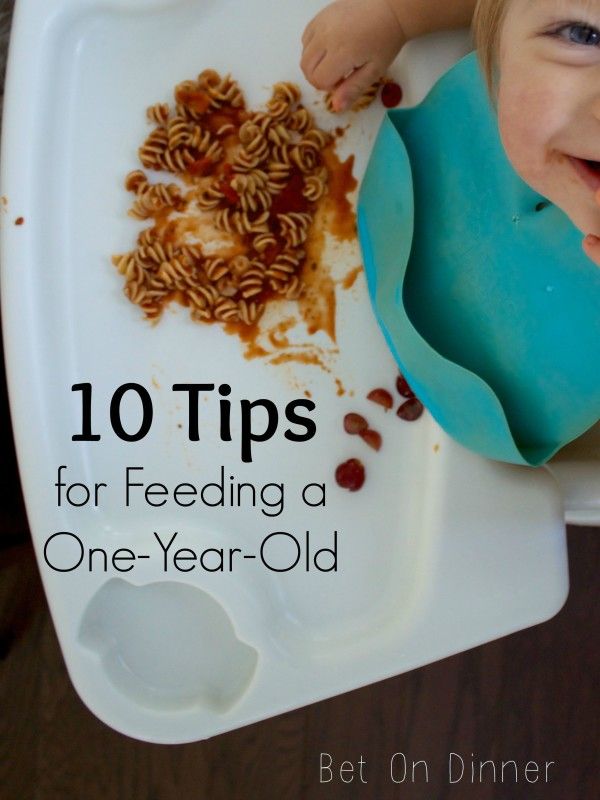
Recipes for breakfast, afternoon tea and dinner are very similar. Variations of products, combinations of cottage cheese, fruits and cereals, light soups and casseroles - all this is equally suitable for breakfast, afternoon tea and dinner.
Children's dinner includes food that the child "did not get" during the day. For example, if there was a lack of cottage cheese and fruits, give cottage cheese and fruits. Children who go to kindergarten do not have enough “live” fermented milk products, egg dishes, since almost all food in kindergarten is thermally processed. Therefore, in the evening you can unload the stomach without offering him anything boiled or baked - eggs, raw vegetables, salads, yogurts, cottage cheese. Well, if there was no dinner in the kindergarten, then we are having dinner at home like an adult.
People often ask: is it bad to eat porridge for dinner, is it not too heavy a meal. Look at the child! The child will always give a signal which food is preferable for him. If the dream is restless, the child cannot fall asleep for a long time - try experimenting with dinner. Porridge is a normal living food, it is better than sandwiches, convenience foods, cereals, cookies, and so on. Porridge can be harmful if it is not absorbed by a particular child for some reason.
If the dream is restless, the child cannot fall asleep for a long time - try experimenting with dinner. Porridge is a normal living food, it is better than sandwiches, convenience foods, cereals, cookies, and so on. Porridge can be harmful if it is not absorbed by a particular child for some reason.
You should not give millet, semolina, barley porridge for dinner, if possible, do not use milk and sugar, replacing them with fruit puree, dried fruits, a spoonful of honey. "Light" porridge for the night is buckwheat, oatmeal and any "children's" (powder).
Also suitable for dinner:
— Cottage cheese, cottage cheese dishes (casseroles, syrniki), cottage cheese with fruit.
- Omelet, vegetables in an omelette, boiled eggs.
- Mixed vegetables, purees, stews, casseroles, vegetable cutlets and zrazy, vegetables with rice, buckwheat. Raw vegetables.
- Salads.
- Fruits - bananas and green apples. Banana calms, increases the feeling of satiety, and green apples are rich in "night" elements - calcium and iron, magnesium, potassium.